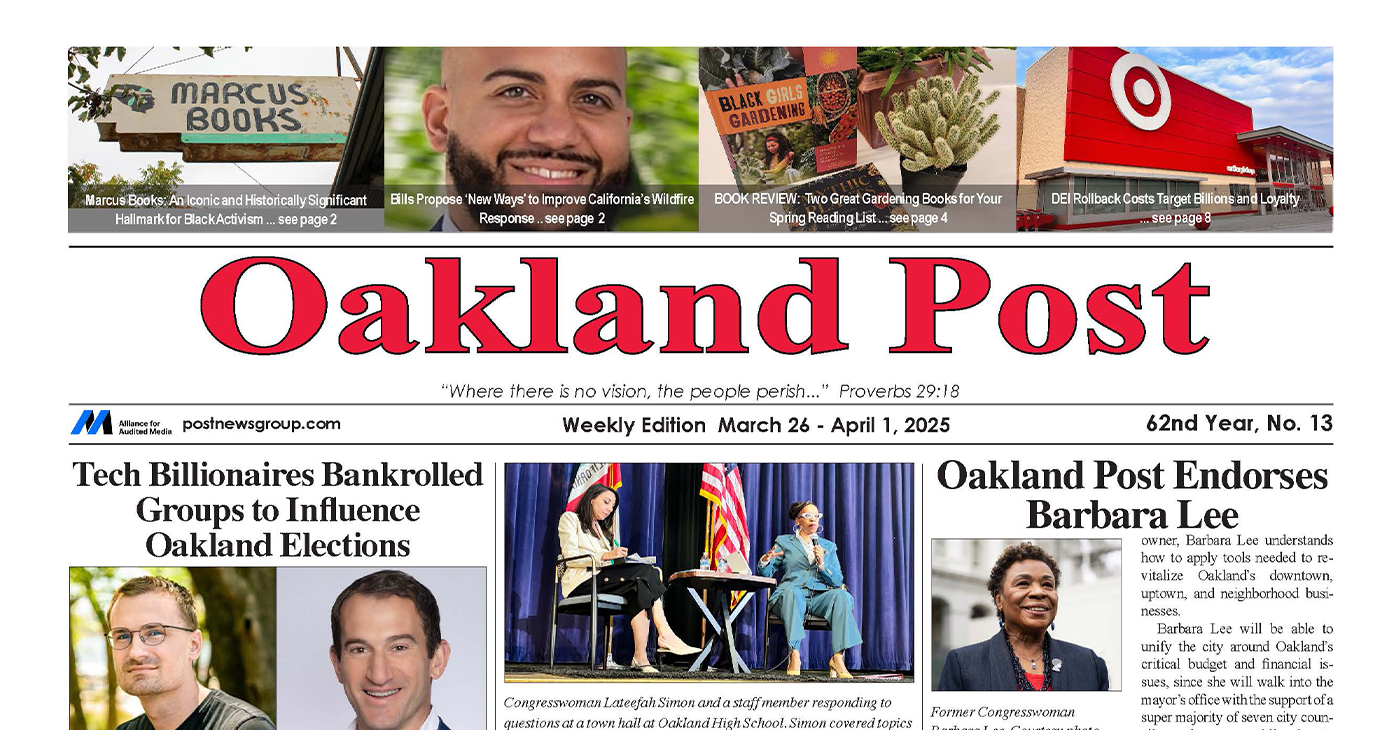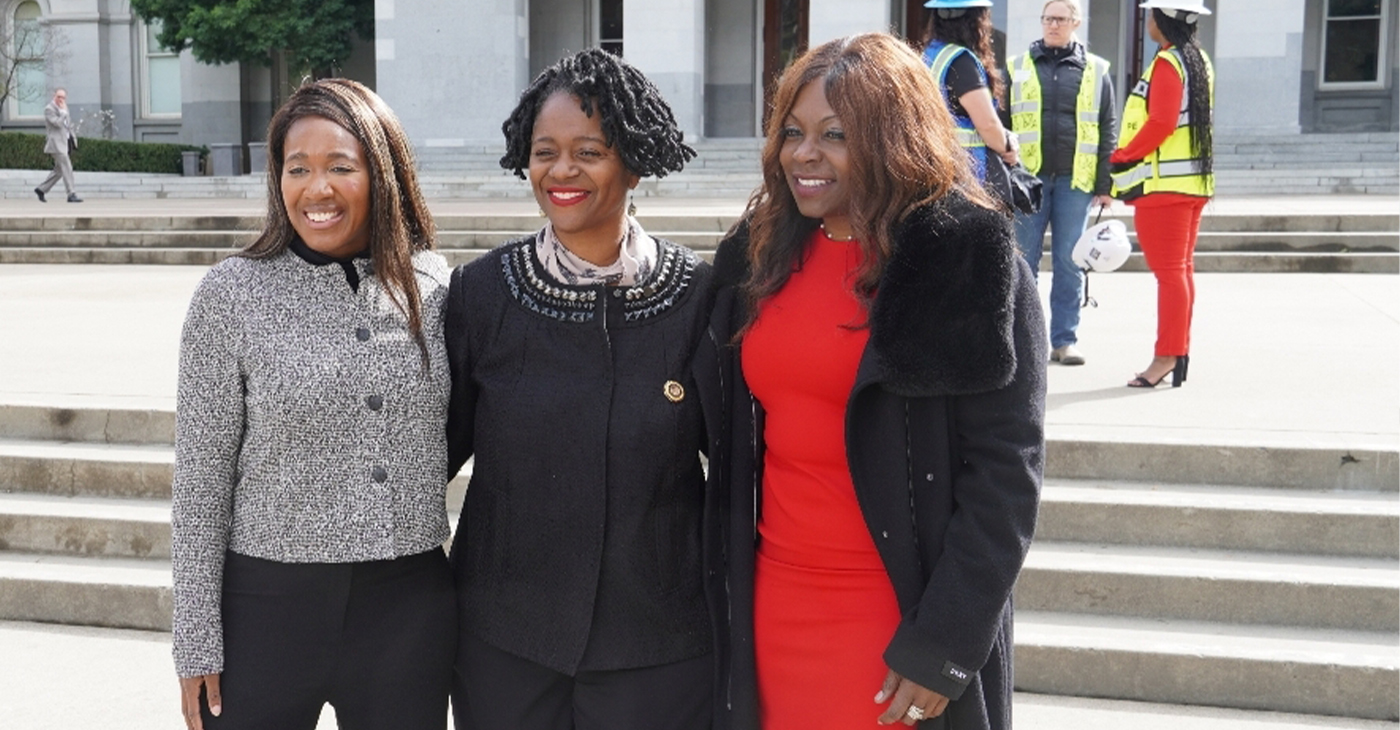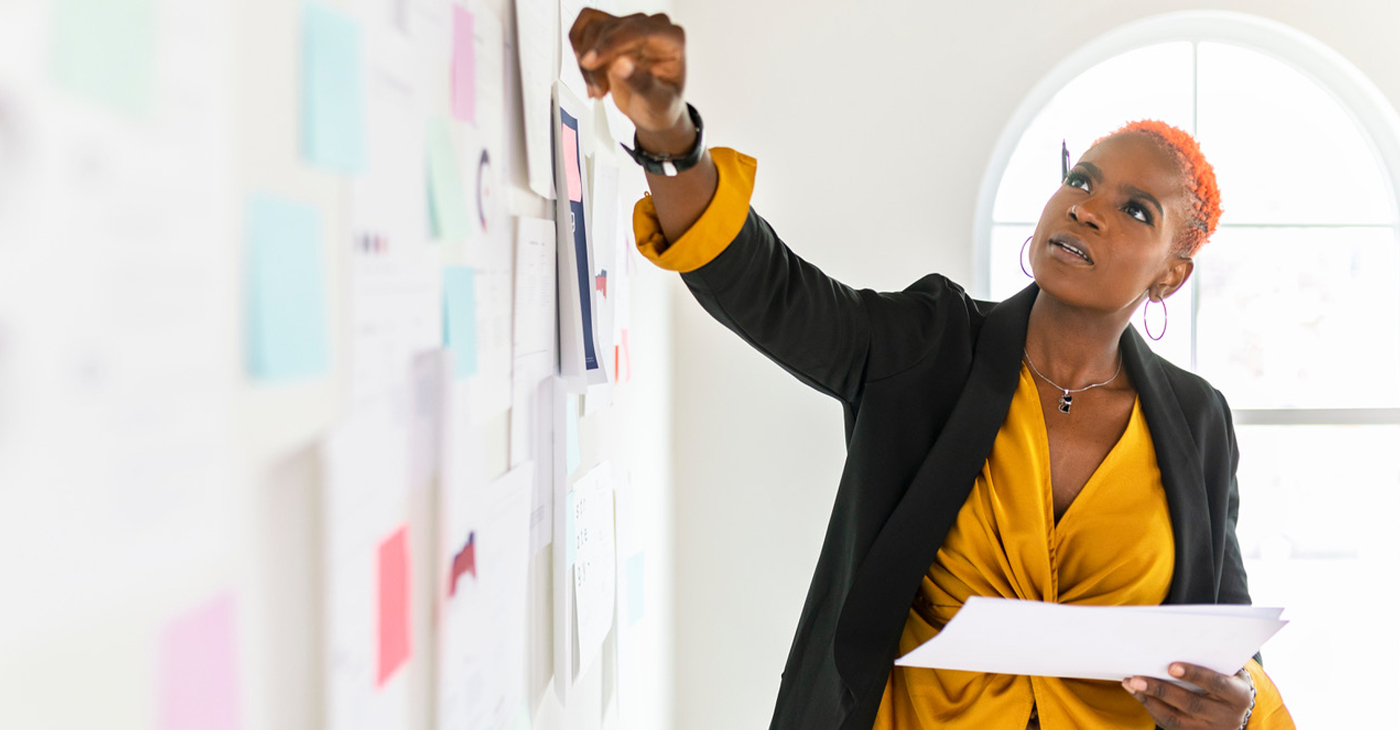National
Some Faith Leaders Victimize Rape Survivors Again
By Jazelle Hunt
NNPA Washington Correspondent
THIRD IN A SERIES
WASHINGTON (NNPA) – Simone Oliver had always been called, as they say in the religious community. She was active in the Baptist church throughout her youth, playing piano for the youth choir and even ghostwriting sermons for several pastors as a teen. She loved Scripture, loved preaching, and loved God. For her, church was heaven-on-earth.
But it was also hell. At 15 years old, Oliver’s then-pastor called her into his church office, grabbed her, put his tongue in her mouth, and fondled her until she broke away. It was the third time in her life she had been sexually assaulted, already a rape survivor at 12 years old at the hands of her sister’s first husband, and again at 13 by a family friend staying in her home.
Still, her faith did not waver. In fact, it grew stronger as Oliver transitioned from being a public school teacher to a minister.
In the mid-2000s, she took on an associate pastor’s role at a non-denominational church in New Jersey. The founding pastor tried to court her for years until she finally acquiesced and the two began a secret relationship. However, a year later, he decided to marry someone else. Still, the affair continued.
“I couldn’t get out. It was almost like sinking into an abyss,” she remembered. “I had gone to someone in the church to let them know this was going on. And they pretty much turned on me.”
And no group leans on the church more than Blacks.
“While the U.S. is generally considered a highly religious nation, African-Americans are markedly more religious on a variety of measures than the U.S. population as a whole, including level of affiliation with religion, attendance at religious services, frequency of prayer and religion’s importance in life,” according to a report titled, “A Religious Portrait of African-Americans” by the Pew Forum on Religion & Public Life.
Black Women are the Most Religious
And among the most religiously committed, no segment is more committed than African-American women. The report found that 84 percent of Black women say religion is very important to them and 59 percent say they attend religious services at least once a week.
As committed as she was, Oliver eventually left that church, broke off the affair with the pastor, began dating the man who would become her husband, and was accepted into Princeton Theological Seminary. As her life got better, her former co-pastor’s behavior grew worse. He sent threats to her regularly, and began stalking her and her then-fiancé.
She recalled, “He said to me – not of himself – but he said, ‘A man can commit murder, do his time, put on a suit, and still be a man. But when a woman’s reputation is ruined, she is ruined.’ Those were his threats to me.”
In 2011, five days before her wedding, the pastor’s behavior moved beyond idle threats.
“It’s a miracle story I’m here and alive, because this man stabbed me 30 times. I was paralyzed from the waist down,” Oliver recounted. Years later, she still remembers his final threat, prior to the day of the attack: “‘When I’m finished with you, you will not get married, you will not have a ministry, and Princeton will never have you.’ That was the last thing he said to me.”
Oliver was stabbed mostly in her abdomen and back, damaging her spinal cord and liver. Her former co-pastor was arrested walking down the street covered in her blood, still holding his hunting knife.
Survivors Need More than Prayer
Sharon Ellis Davis, a former criminalist in the Chicago Police Department and retired pastor, knows a bit about crime from more than one perspective.
She said, “I was married to a police officer, and there was a domestic abuse issue and sexual abuse. It was dismissed all the time. It was a matter of, ‘You all stop,’ or ‘Don’t be so bad,’ or ‘It’ll be okay.’ But never ‘I hear you, I understand you, I believe you.’ Even if [the department] knew the abuser was guilty, there was that code where you don’t rat on other police officers.”
So Davis channeled her frustration into something useful. She successfully lobbied for an internal domestic violence advocate, a civilian who would support and speak for domestic violence victims in police officers’ homes and became a full-time police chaplain.
But in Davis’ own church experience – first in the Pentecostal church as a child, then in the United Church of Christ as an adult – she saw parallels to the way she was treated by the police department.
“The church was nice to me, but they didn’t know what to do with me,” she said. “I need more than prayer, I need more than a hug. In fact, sometimes [survivors] don’t even want to be touched. I need more than a deliverance service, I need more than a Band-Aid on what forgiveness might look like.
“The two very important institutions that I was involved with – the church and the criminal justice system – both in the time that I needed them, failed me. Now they didn’t know they did, because they were not conscious of it.”
Davis feels that lack of consciousness grew from the problematic messages about women coming from the pulpit. For example she points out the Biblical stories that are emphasized, such as the false rape accusation of Joseph, and the ones that are largely ignored, such as the actual rapes of Dinah and Tamar as well as David’s coercion of Bathsheba.
To her, they all sent the message that the burden of sexual trauma is not welcome in the sanctuary.
“The church has not become the safe place it needs to be that would give some women in church permission to disclose,” Davis said. “The consequences of not having church as a safe place…you can kill the souls of the people that are there. People can lose their faith.”
Sex and sexuality remain taboo in many faith communities.
“How is it that the church is going to really be advocates for victims of rape in the Black church when even having normal conversations of sexuality can’t happen? How can we talk about patho-sexuality if we haven’t talked about normal sexuality?” she asked. “We’re still stuck in many way on the thou-shalt-nots. We spend more time judging the behavior than helping someone understand this was not their fault.”
Even worse than a lack of knowledge among leadership is that perpetrators often exist within the church, their violence and damage unchecked and even covered up.
Oliver said, “I had a woman call me – I thought she was calling to check on me and see how I was – but she called to tell me her own story, about a pastor. Someone [else] told me a story. She was invited out to another church to preach, and was raped by the pastor who had invited her. When the third person, and fourth person, and the fifth time you hear these stories…. I’m like okay. Something is going on here.”
After more than three months of physical rehab, Oliver overcame her paralysis and learned to walk again. She testified in court against her attacker, who was sentenced to 21 years in prison.
For all their silences and inadequacies, many Black faith centers are adept at serving their communities and fostering communal solutions and cooperation. Both Davis and Oliver assert that Black faith centers have also made great strides toward addressing domestic violence, with permanent ministries and pastor trainings becoming more common.
“We’re better in the Black church at caring for people,” Davis explained. “But we’re not as good at having a model of pastoral care for people who have been sexually abused. We’re not having clergy exposed to the education that they need to understand these dynamics.”
Some outside the faith community recognize this as well, including Sherelle Hessell-Gordon, executive director of the D.C. Rape Crisis Center.
“The Word says faith without works is dead,” she says. “There has to be fruit, there has to be action, there has to be community…there has to be active justice,” she said. “The rhetoric of ‘It’ll get better by and by’ – nah. That’s just spirituals to move our souls. When you leave that room, you’re still carrying that cross.”
Oliver, now a full-time seminary student, said, “I’m a rape survivor, but I’m also a gender-based violence survivor, and it took the violence for me to really reckon with the rape,” she acknowledged. “In telling my story…I started to realize how many horror stories are in church.”
NEXT WEEK: Breaking the silence
Part I: Rape and the Myth of ‘The Strong Black Woman’
Part II: Rape’s Other Victims
(The project was made possible by a grant from the National Health Journalism Fellowship, a program of the University of Southern California Annenberg School for Communication and Journalism.)
###
Activism
Oakland Post: Week of March 28 – April 1, 2025
The printed Weekly Edition of the Oakland Post: Week of March 28 – April 1, 2025

To enlarge your view of this issue, use the slider, magnifying glass icon or full page icon in the lower right corner of the browser window.
Activism
Sen. Lola Smallwood-Cuevas Honors California Women in Construction with State Proclamation, Policy Ideas
“Women play an important role in building our communities, yet they remain vastly underrepresented in the construction industry,” Smallwood-Cuevas stated. “This resolution not only recognizes their incredible contributions but also the need to break barriers — like gender discrimination.

By Antonio Ray Harvey, California Black Media
To honor Women in Construction Week, Sen. Lola Smallwood-Cuevas (D-Los Angeles), a member of the California Legislative Black Caucus (CLBC), introduced Senate Concurrent Resolution (SCR) 30 in the State Legislature on March 6. This resolution pays tribute to women and highlights their contributions to the building industry.
The measure designates March 2, 2025, to March 8, 2025, as Women in Construction Week in California. It passed 34-0 on the Senate floor.
“Women play an important role in building our communities, yet they remain vastly underrepresented in the construction industry,” Smallwood-Cuevas stated. “This resolution not only recognizes their incredible contributions but also the need to break barriers — like gender discrimination.
Authored by Assemblymember Liz Ortega (D-San Leandro), another bill, Assembly Concurrent Resolution (ACR) 28, also recognized women in the construction industry.
The resolution advanced out of the Assembly Committee on Rules with a 10-0 vote.
The weeklong event coincides with the National Association of Women In Construction (NAWIC) celebration that started in 1998 and has grown and expanded every year since.
The same week in front of the State Capitol, Smallwood, Lt. Gov. Eleni Kounalakis, Assemblymember Josh Hoover (R-Folsom), and Assemblymember Maggie Krell (D-Sacramento), attended a brunch organized by a local chapter of NAWIC.
Two of the guest speakers were Dr. Giovanna Brasfield, CEO of Los Angeles-based Brasfield and Associates, and Jennifer Todd, President and Founder of LMS General Contractors.
Todd is the youngest Black woman to receive a California’s Contractors State License Board (A) General Engineering license. An advocate for women of different backgrounds, Todd she said she has been a woman in construction for the last 16 years despite going through some trying times.
A graduate of Arizona State University’s’ Sandra Day O’Connor College of Law, in 2009 Todd created an apprenticeship training program, A Greener Tomorrow, designed toward the advancement of unemployed and underemployed people of color.
“I always say, ‘I love an industry that doesn’t love me back,’” Todd said. “Being young, female and minority, I am often in spaces where people don’t look like me, they don’t reflect my values, they don’t reflect my experiences, and I so persevere in spite of it all.”
According to the U.S. Bureau of Labor Statistics, only 11.2% of the construction workforce across the country are female. Overall, 87.3% of the female construction workers are White, 35.1% are Latinas, 2.1% are Asians, and 6.5% are Black women, the report reveals.
The National Association of Home Builders reported that as of 2022, the states with the largest number of women working in construction were Texas (137,000), California (135,000) and Florida (119,000). The three states alone represent 30% of all women employed in the industry.
Sen. Susan Rubio (D-Baldwin Park) and the California Legislative Women’s Caucus supported Smallwood-Cuevas’ SCR 30 and requested that more energy be poured into bringing awareness to the severe gender gap in the construction field.
“The construction trade are a proven path to a solid career. and we have an ongoing shortage, and this is a time for us to do better breaking down the barriers to help the people get into this sector,” Rubio said.
Activism
Report Offers Policies, Ideas to Improve the Workplace Experiences of Black Women in California
The “Invisible Labor, Visible Struggles: The Intersection of Race, Gender, and Workplace Equity for Black Women in California” report by the California Black Women’s Collective Empowerment Institute (CBWCEI), unveiled the findings of a December 2024 survey of 452 employed Black women across the Golden State. Three-fifths of the participants said they experienced racism or discrimination last year and 57% of the unfair treatment was related to incidents at work.

By McKenzie Jackson, California Black Media
Backed by data, a report released last month details the numerous hurdles Black women in the Golden State must overcome to effectively contribute and succeed in the workplace.
The “Invisible Labor, Visible Struggles: The Intersection of Race, Gender, and Workplace Equity for Black Women in California” report by the California Black Women’s Collective Empowerment Institute (CBWCEI), unveiled the findings of a December 2024 survey of 452 employed Black women across the Golden State. Three-fifths of the participants said they experienced racism or discrimination last year and 57% of the unfair treatment was related to incidents at work.
CBWCEI President and CEO Kellie Todd Griffin said Black women have been the backbone of communities, industries, and movements but are still overlooked, underpaid, and undervalued at work.
“The data is clear,” she explained. “Systemic racism and sexism are not just historical injustices. They are active forces shaping the workplace experiences of Black women today. This report is a call to action. it demands intentional polices, corporate accountability, and systemic changes.”
The 16-page study, conducted by the public opinion research and strategic consulting firm EVITARUS, showcases the lived workplace experiences of Black women, many who say they are stuck in the crosshairs of discrimination based on gender and race which hinders their work opportunities, advancements, and aspirations, according to the report’s authors, Todd Griffin and CBWCEI researcher Dr. Sharon Uche.
“We wanted to look at how Black women are experiencing the workplace where there are systematic barriers,” Todd Griffin told the media during a press conference co-hosted by Ethnic Media Services and California Black Media. “This report is focused on the invisible labor struggles of Black women throughout California.”
The aspects of the workplace most important to Black women, according to those surveyed, are salary or wage, benefits, and job security.
However, only 21% of the survey’s respondents felt they had strong chances for career advancement into the executive or senior leadership ranks in California’s job market; 49% felt passed over, excluded from, or marginalized at work; and 48% felt their accomplishments at work were undervalued. Thirty-eight percent said they had been thought of as the stereotypical “angry Black woman” at work, and 42% said workplace racism or discrimination effected their physical or mental health.
“These sentiments play a factor in contributing to a workplace that is unsafe and not equitable for Black women in California,” the report reads.
Most Black women said providing for their families and personal fulfillment motivated them to show up to work daily, while 38% said they were dissatisfied in their current job with salary, supervisors, and work environment being the top sources of their discontent.
When asked if they agree or disagree with a statement about their workplace 58% of Black women said they feel supported at work, while 52% said their contributions are acknowledged. Forty-nine percent said they felt empowered.
Uche said Black women are paid $54,000 annually on average — including Black single mothers, who averaged $50,000 — while White men earn an average of $90,000 each year.
“More than half of Black families in California are led by single Black women,” said Uche, who added that the pay gap between Black women and White men isn’t forecasted to close until 2121.
-

 Activism4 weeks ago
Activism4 weeks agoUndocumented Workers Are Struggling to Feed Themselves. Slashed Budgets and New Immigration Policies Bring Fresh Challenges
-

 Activism1 week ago
Activism1 week agoWe Fought on Opposite Sides of the Sheng Thao Recall. Here’s Why We’re Uniting Behind Barbara Lee for Oakland Mayor
-

 Activism4 weeks ago
Activism4 weeks agoOakland Post: Week of March 5 – 11, 2025
-

 #NNPA BlackPress2 weeks ago
#NNPA BlackPress2 weeks agoRev. Dr. Jamal Bryant’s Black Church Target Boycott Mobilizes 150,000
-

 Activism2 weeks ago
Activism2 weeks agoSan Francisco Is Investing Millions to Address Food Insecurity. Is Oakland Doing the Same?
-

 #NNPA BlackPress4 weeks ago
#NNPA BlackPress4 weeks agoTrump Moves to Dismantle Education Department
-

 #NNPA BlackPress4 weeks ago
#NNPA BlackPress4 weeks agoFighting to Keep Blackness
-

 #NNPA BlackPress2 weeks ago
#NNPA BlackPress2 weeks agoRecently Approved Budget Plan Favors Wealthy, Slashes Aid to Low-Income Americans




























































Pingback: Rape’s Other Victims | BlackPressUSA
Pingback: The Loud Silence of Rape Survivors | BlackPressUSA
Pingback: The Loud Silence of Rape Survivors | SD Voice